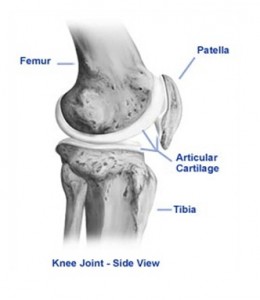Articular cartilage damage refers to the damage rendered to a type of hyaline cartilage which is generally present in the bones’ articular structure. The cartilage is a slimy mass that has a definite consistency and elasticity and can be found in bones. It is made up of neither nerves nor blood cells and it has a relatively simple structure.
Articular Cartilage Damage – Causes and Consequences
The structure of cartilage can be easily damaged, and a few of the causes for ankle pain due to such damage have been given below:
- A horrific fall may result in some harm to a bone and hence harm to the cartilage
- Sport accidents and other road accidents are also associated with damage to cartilage
- Injuries to the knee which have gotten worse over time can cause articular cartilage damage
- Wear and tear causes cartilage damage in most old people
- If a person has not used a particular part of his body for a long time, then the bone relating to that part of the body may suffer cartilage damage
In case of articular cartilage damage, it is possible for the articular cartilage injury to be displayed by its own accord or through injuries to other ligaments and tendons or menisci. People who have been operated on before are at a higher risk of going through articular cartilage damage as their joint mechanics are slightly altered, so even a small injury can lead to a big problem.

The Consequences of Articular Cartilage Damage
Many body parts often regenerate by repairing themselves by forming the same kind of tissue. Articular cartilage does not possess this ability and for this reason, there is always loss of tissue after an injury or a disease. This leads to the formation of defects in the system and this should be immediately repaired.
As the cartilage does not have any nerves or blood vessels, it is highly likely that a small or shallow wound will not produce any pain. This is why most people ignore such articular cartilage damage. Since the cartilage cannot repair itself, articular cartilage damage is generally overlooked for months and in some cases, for years.
As time passes on and a small injury is ignored, the articular cartilage damage increases. As this happens, the defect formed, known as the chondral defect, moves towards the subchondral bone. As the bone has a supply of blood, it tries to heal the chondral defect. During this healing process, scar tissue is formed and such scar tissue is made up of a type of cartilage termed as fibrocartilage.
This causes further problems as the articular cartilage, which can be basically split as hyanine cartilage and fibrocartilage, has different structures. Fibrocartilage is much denser in comparison to hyanine cartilage, so even though the defect may be healed, the fibrocartilage has a greater risk of breaking down because it cannot match the demands of hyanine cartilage which is used in day to day activities.
It was found in 2006 that even the smallest defect caused by articular cartilage damage can lead to osteoarthritis if it is not treated immediately. Even though a defect of the articular cartilage may appear to be small or insignificant, it has the potential to have a negative domino effect on the chemical and physical surroundings of either other cartilages or uninjured articular cartilages in the body.
A damaged cartilage in the ankle can be treated by a surgery on the ankle joint. The ankle fusion surgery is carried out to treat the pain in the ankle, and this is determined after a foot pain diagnosis.